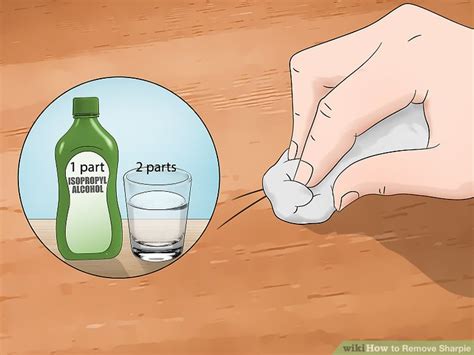How to Erase Sharpie: A Comprehensive Guide
Sharpie markers, known for their bold and permanent ink, can be a frustrating discovery on surfaces where they're unwelcome. Whether it's a mishap on your favorite shirt, a child's artistic expression on the wall, or a misplaced mark on a valuable piece of furniture, knowing how to remove Sharpie effectively is crucial. This comprehensive guide explores various methods to erase Sharpie from different surfaces, ensuring you get the best results.
Understanding Sharpie Ink
Before diving into removal methods, it's important to understand that "permanent" doesn't always mean impossible to remove. Sharpie ink is an oil-based dye that bonds with porous surfaces like paper and fabric, making removal more challenging. However, with the right approach and a little patience, you can often achieve satisfactory results. The success of any method depends greatly on the surface and how long the ink has been there. Fresh marks are generally easier to remove than those that have had time to set.
Methods for Erasing Sharpie
The best method for removing Sharpie depends on the surface. Here's a breakdown of effective techniques for different materials:
1. Removing Sharpie from Fabric:
Preparation is Key: Always test any cleaning solution on an inconspicuous area of the fabric first to ensure it doesn't cause discoloration or damage.
-
Rubbing Alcohol (Isopropyl Alcohol): This is a popular and often effective method. Dab (don't rub!) the alcohol onto the Sharpie mark with a clean cloth or cotton swab. Blot gently, working from the outside of the stain inward. Repeat as needed. For stubborn marks, you might need to let the alcohol soak into the fabric for a few minutes before blotting.
-
Hairspray: Believe it or not, hairspray can sometimes work wonders! Spray a generous amount onto the stain, let it sit for a few minutes, and then blot with a clean cloth.
-
Hand Sanitizer: Containing alcohol, hand sanitizer can also be effective in removing fresh Sharpie marks. Apply and blot as with rubbing alcohol.
-
Laundry Detergent: For washable fabrics, pre-treat the stain with laundry detergent before washing as usual.
Important Note: Always air dry the fabric after cleaning to avoid setting the stain with heat from a dryer.
2. Removing Sharpie from Skin:
Sharpie on skin is usually less problematic. These methods are gentle yet effective:
-
Soap and Water: Often, a thorough washing with soap and water will suffice.
-
Baby Oil or Olive Oil: These oils can help lift the ink from the skin's surface. Apply, rub gently, and rinse thoroughly.
-
Makeup Remover: Certain makeup removers, particularly those containing oil, can effectively remove Sharpie from skin.
3. Removing Sharpie from Walls:
Removing Sharpie from walls requires a more delicate approach to avoid damaging the paint.
-
Baking Soda Paste: Create a paste of baking soda and water. Apply to the Sharpie mark, let it sit for a few minutes, and gently scrub with a soft sponge or cloth.
-
Magic Eraser (Mr. Clean): These melamine foam erasers are surprisingly effective on many surfaces, including walls. Always test in an inconspicuous area first. Gently rub the eraser on the mark, rinsing and repeating as needed.
-
Commercial Cleaners: Several commercial cleaning products are specifically designed for removing marker stains from walls. Always follow the manufacturer's instructions carefully.
4. Removing Sharpie from Wood:
Wood is a porous surface, making Sharpie removal tricky.
- Mineral Spirits: Carefully apply mineral spirits to a clean cloth and gently dab at the mark. Test in an inconspicuous area first. This is best for unfinished or sealed wood.
5. Removing Sharpie from Plastic:
-
Isopropyl Alcohol (Rubbing Alcohol): Similar to fabric, rubbing alcohol can work wonders on plastic surfaces. Test in an inconspicuous area first.
-
Nail Polish Remover (Acetone-Based): Use with extreme caution. Acetone can damage some plastics. Test in a hidden area first, and if it works, use sparingly and wipe immediately.
Preventing Future Sharpie Mishaps
Prevention is always better than cure! Here are some tips to avoid Sharpie accidents:
- Proper Storage: Keep Sharpies out of reach of children.
- Designated Areas: Designate specific areas for Sharpie use, away from delicate surfaces.
- Protective Layers: Consider using protective coverings (e.g., tablecloths, drop cloths) when working with Sharpies.
By following these methods and prevention tips, you can successfully erase Sharpie marks from various surfaces and keep your belongings looking their best. Remember always to test any cleaning solution on an inconspicuous area before applying it to the main stain. Patience is key, and with the right technique, you can conquer even the most stubborn Sharpie marks.
